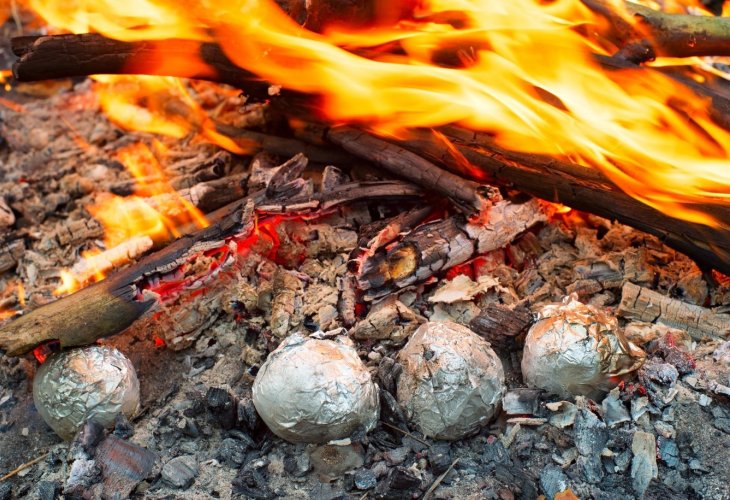Lag BaOmer - Hosting a Healthier Bonfire
Children and adults of all ages gather around the bonfire, often enjoying snacks that aren't the healthiest. How can we make the bonfire experience healthier?
 (Photo: shutterstock)
(Photo: shutterstock)Lag BaOmer, commonly known as the "Holiday of Bonfires," is celebrated with annual bonfire events organized by communities, schools, and kindergartens. These events feature plenty of treats that aren't necessarily healthy. So how do we address this?
First, we can suggest to the bonfire organizers to provide healthier snacks this year, such as veggie sticks, corn on the cob, sliced watermelon and melon, or small sandwiches with hummus or cheese.
1. If additional food is desired, consider ordering pizza or falafel, which offer better nutritional value compared to hot dogs in buns. Generally, it's better to start with the food and save the marshmallows and other sweets for later.
2. The well-known tradition of tossing a potato into the bonfire: Potatoes belong to the nightshade family (just like tomatoes and eggplants) and are actually underground stems called tubers. Potatoes are rich in potassium and B vitamins, and even contain some vitamin C. Nutritionally, potatoes belong to the carbohydrate group, with 100 grams containing between 17-20 grams of carbs. By comparison, a slice of regular bread contains about 15 grams of carbohydrates. Additionally, potatoes have a high glycemic index, meaning they break down into sugar relatively quickly, which can cause a sharp and rapid rise in blood sugar levels after consumption. It's good to know that boiled potatoes have a higher index compared to baked potatoes, and sweet potatoes have an even lower index compared to potatoes in any form. If you wash the potato skins thoroughly, you can eat them too, which provides more vitamins and lowers the glycemic index. It's important to remember that for some children, potatoes can significantly raise blood sugar levels, so those who know this should eat a small potato or half of a larger one. You can also throw whole eggplants (with very few carbohydrates), sweet potatoes, or Jerusalem artichokes wrapped in foil into the bonfire, as they have a low glycemic index and likely contribute less to blood sugar spikes.
3. From a health perspective, remember that it's not recommended to eat "burnt" food, as it contains compounds that are not friendly to health. Additionally, food can absorb a large amount of harmful smoke.
4. Marshmallows over the fire - It's advisable to bring them close to the fire for a few seconds to get the toasting effect without burning them. Keep in mind that marshmallows, although soft, can become a choking hazard by forming a lump in the throat (even for older children). It's crucial to remind children to chew marshmallows multiple times before swallowing. Marshmallows consist mainly of white sugar, along with starch, flavorings, and food colorings. Five marshmallows contribute about 70 calories and 15 grams of carbohydrates, similar to a slice of bread.
5. When the bonfire lasts several hours into the night, you can prepare pots of stew containing legumes and vegetables like zucchini, pumpkin, onions, and garlic. A stew without potatoes and sweet potatoes will likely result in a moderate increase in blood sugar levels.
6. For people with diabetes: As with any event spent outside the home for several hours, insulin users must prepare in advance with equipment for hypoglycemia and a blood sugar meter.
Einat Mazor-Bakr is a clinical dietitian at the DMC for Diabetes Treatment.

